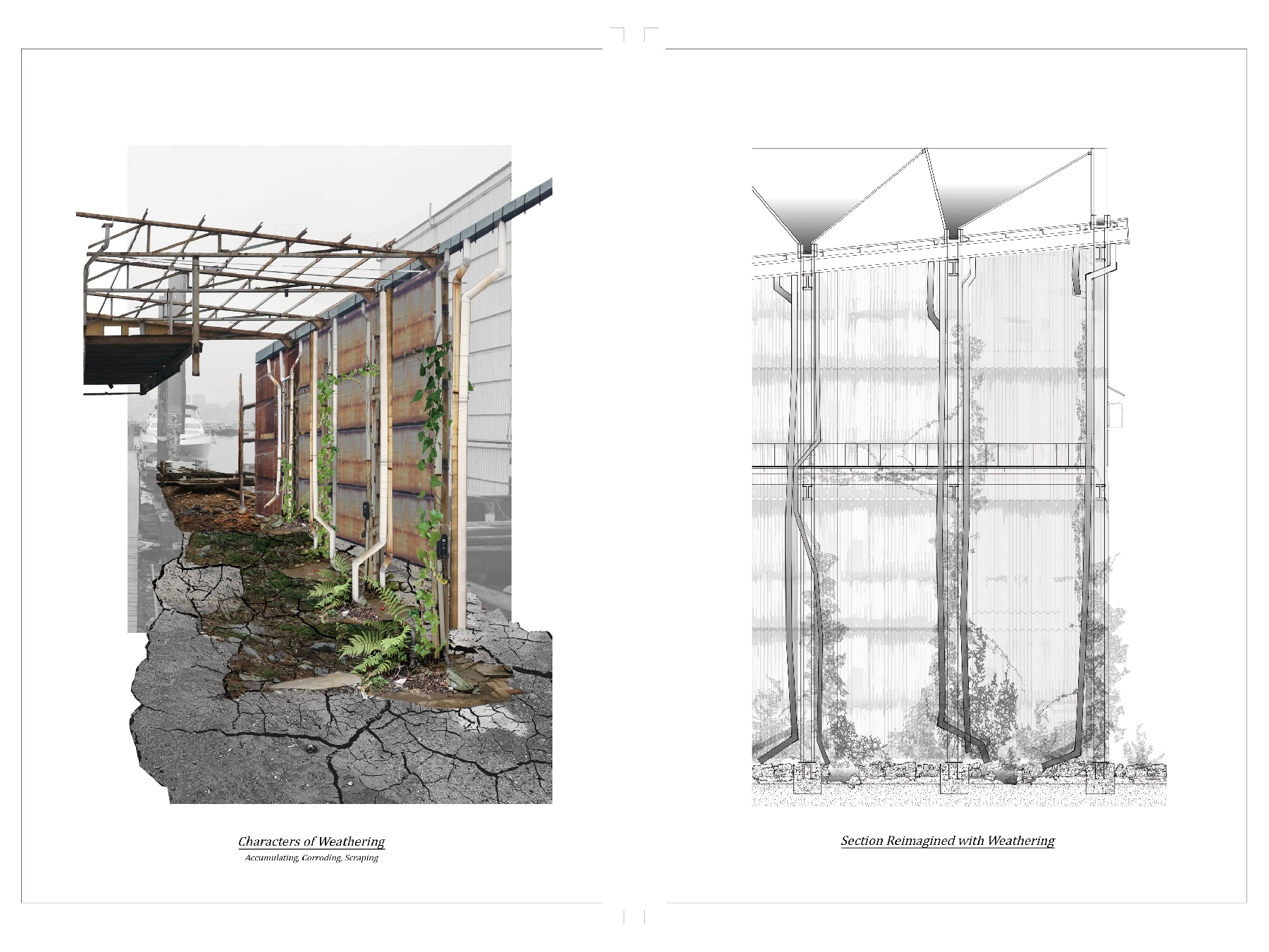
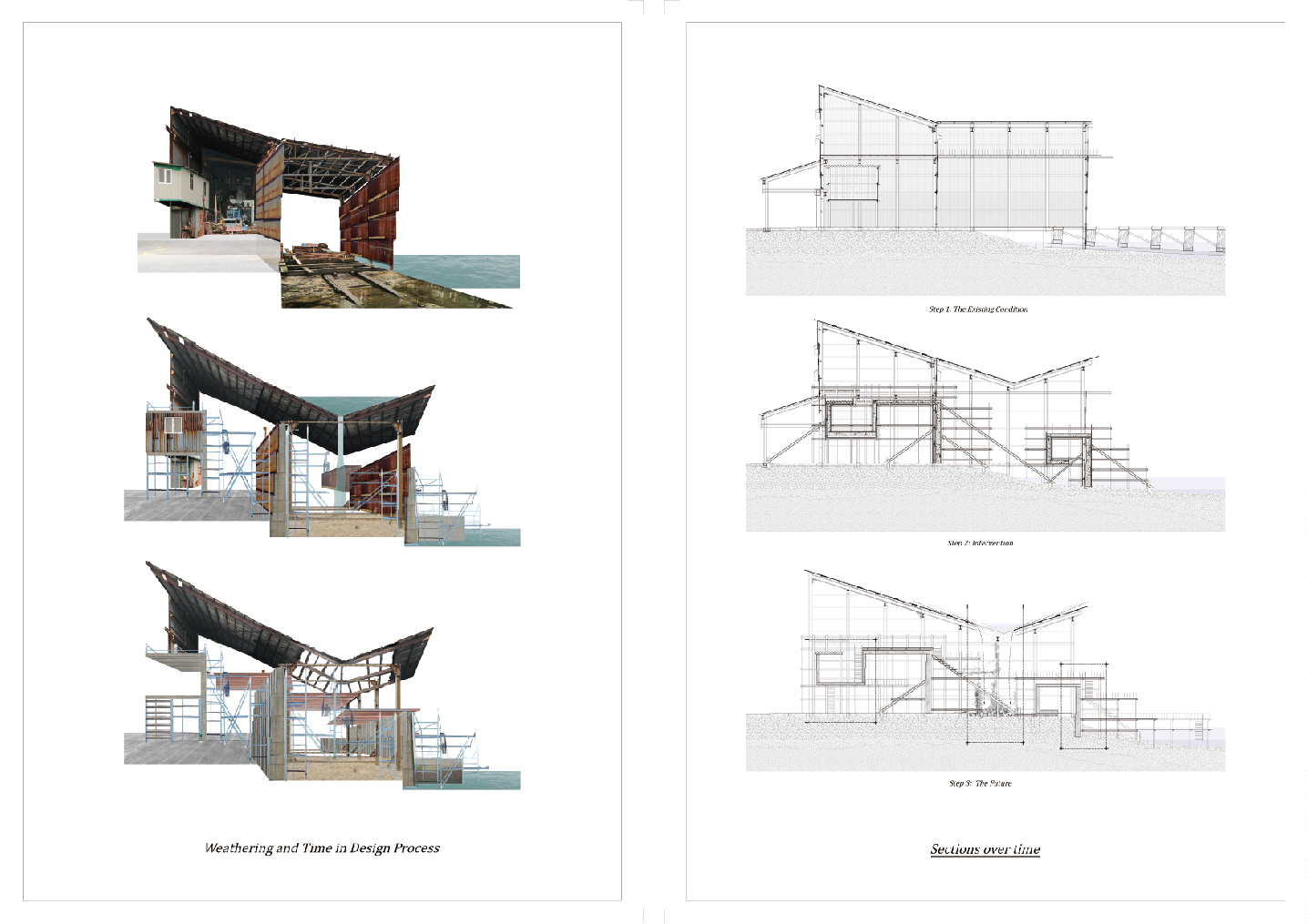
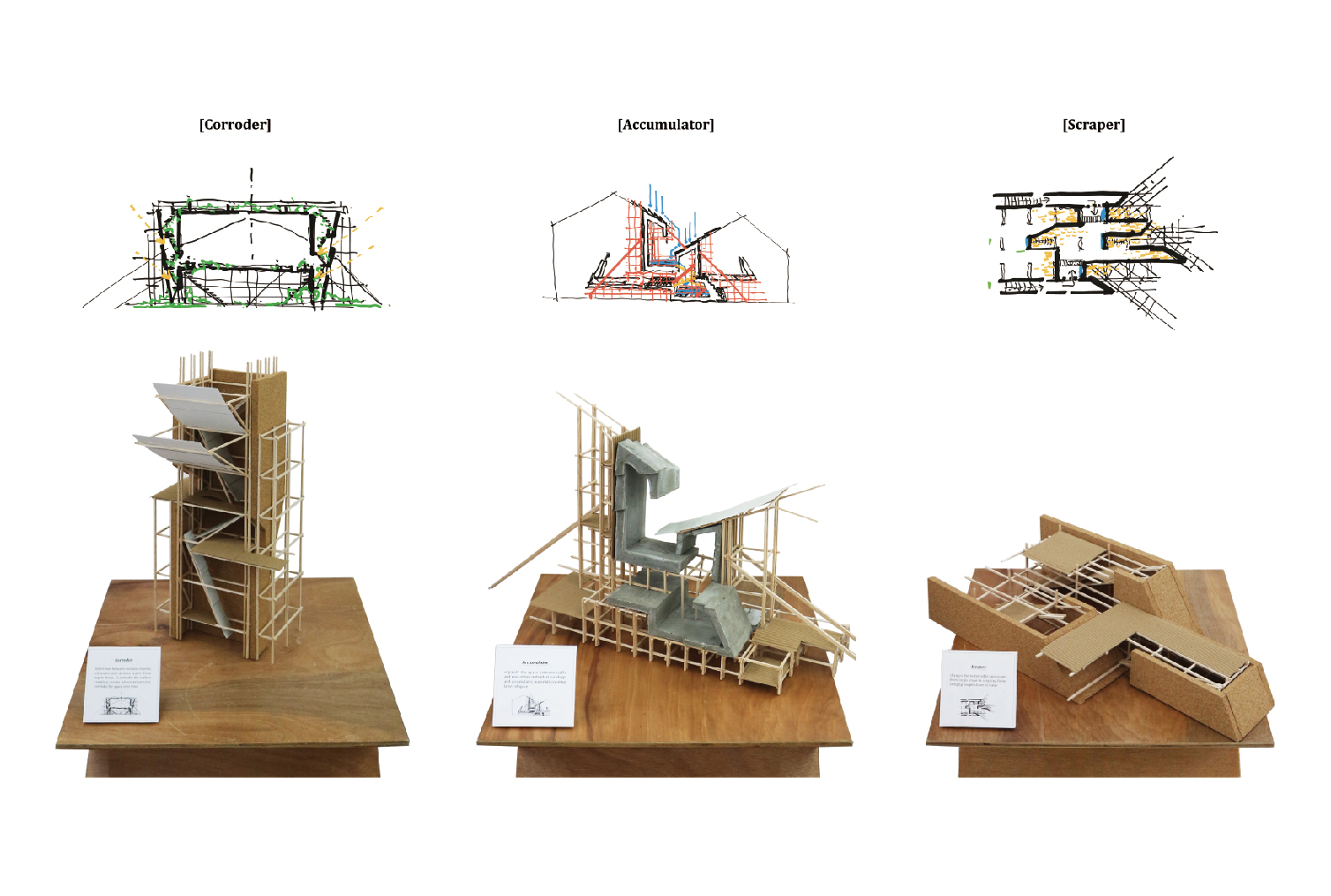

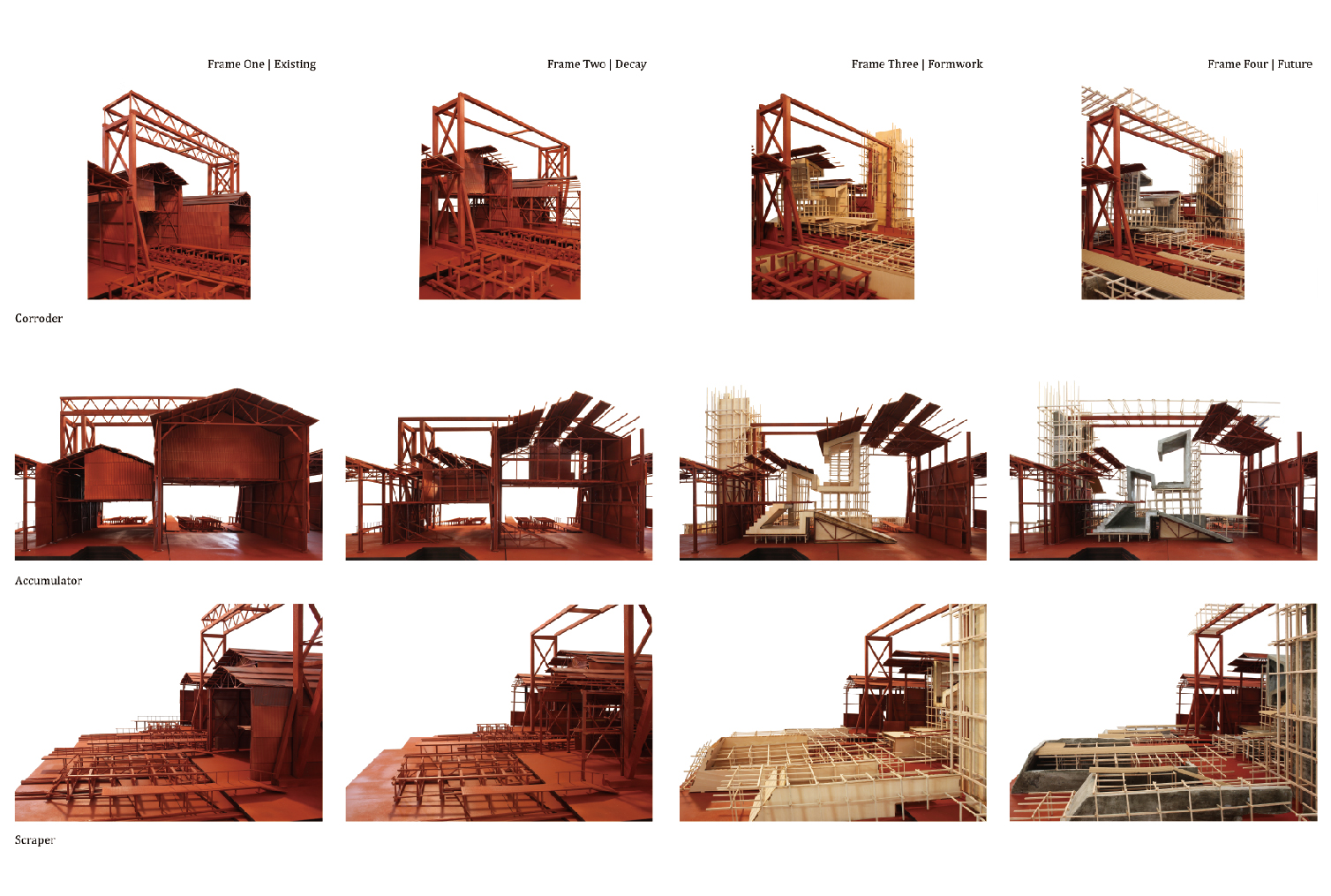
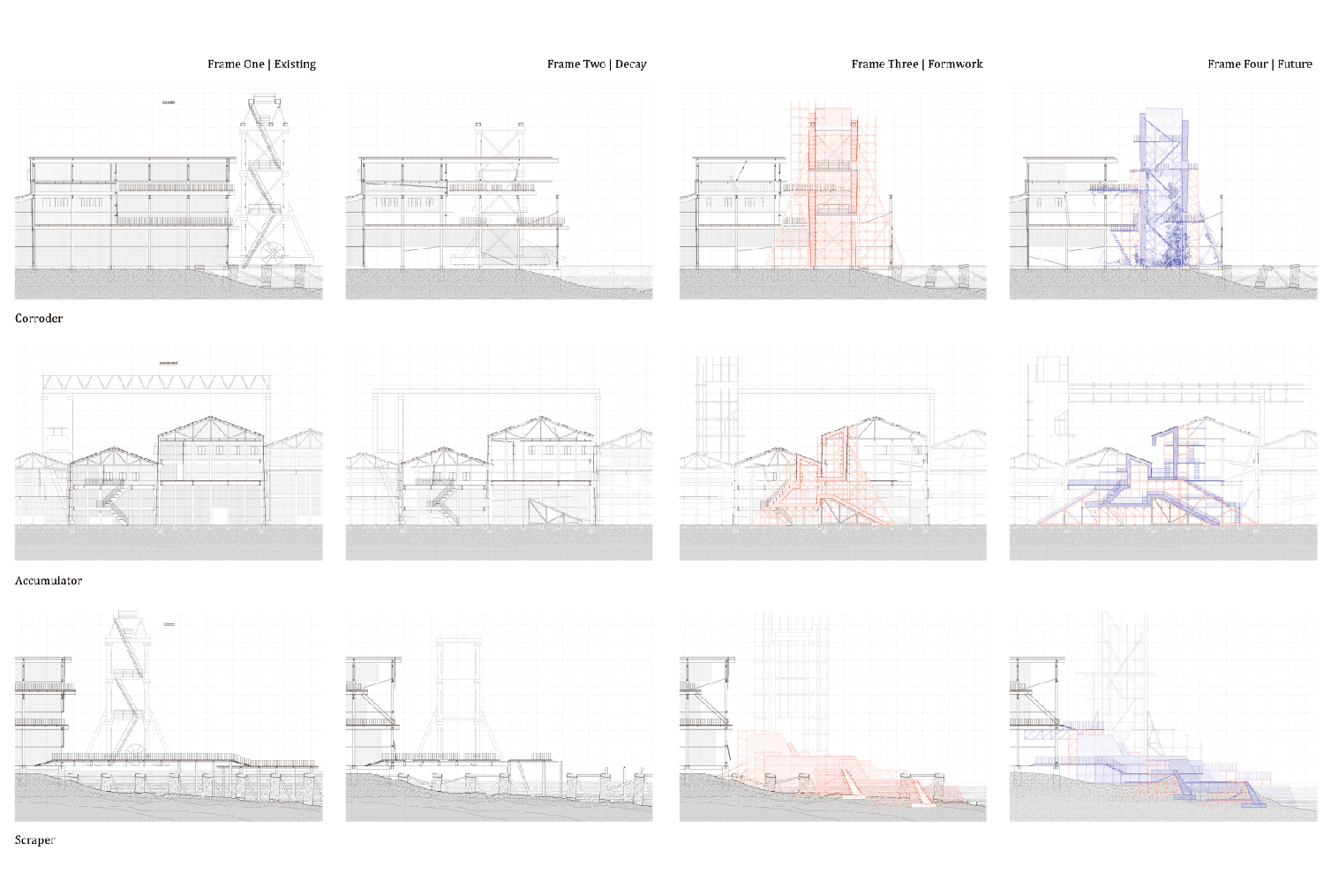
Urban Archive: Rethinking Time and Weathering in the Design Process
香港 / hong kong
朴秀彬 / PARK, Subin
Urban Archive: Rethinking Time and Weathering in Design Process
城市档案:建筑设计中时间与退化的反思
The Urban Archive highlights the significance of continuity to be embedded in the process and architectural representation so that architecture is not understood as a product but a living thing that evolves from and with the city.
城市檔案重視延續性,將延續性置入流程和建築表現內,讓建築不只是產品,而是隨城市演變的活體。
Rethinking weathering as the design tool, Urban Archive develops a construction method that can be an alternative to today’s preservation of architecture. The texture imprinted on the concrete allows the users to read the spatial information of the past. The architectural preservation becomes an act of archiving in a spatial form in contrast to how information is archived in paper formats.
城市檔案將風化視為設計工具,發展出不同於今日建築保存的替代營建工法,透過混凝土的肌理,能閱讀過往的空間資訊,建築保存成為空間上的歸檔,而不再全然仰賴紙本資訊紀錄。
The fate of architecture in postindustrial cities like Hong Kong shows no continuation or link between the old and the new, and such a linear process often neglects the value and information of what existed before. Every building is vulnerable to weathering and state of obsolescence through time, but the current practice in architecture still works in a way that resists the buildings from the overtaking of natural processes, the weathering. With such context, the key aims for the project is about the application of weathering as a tool for design and breaking away from the conventional mode of representation. Thereby, the representation of architecture itself becomes the process of designing through making of a device that timely records the spatial transformation.
在香港等後工業城市,建築的命運看不見新與舊的延續或連結,線性流程往往忽略固有價值和資訊,每棟建築都會受風化影響,也會在時光中凋零,但現有建築實踐也強調建築要抵抗自然風化。在此脈絡下,本作品希望一反常見表現式,將風化視為設計工具,將建築表現本身視為設計流程,讓建築成為裝置,及時記錄空間變換。
While rethinking weathering as a tool for design, the idea of archiving evolved more strongly on how this method of construction (found object + cast + formwork) can be an alternative to the way preservation of architecture is currently done. The texture imprinted on the new concrete cast offers an opportunity for users to read the spatial information about the existing such as the structural relationship, material, or location. Thereby, the preservation of architecture becomes an act of archiving in a spatial form in contrast to how information is usually archived in paper formats. Three characters of space, Corroder, Accumulator, and Scraper, are designed, while each takes advantage of weathering in creating spatial transformations over time.
因為將風化視為設計工具,歸檔構想更在乎這種營建方式(現成物、鑄模、模板),如何做為現有建築保存的替代方案,從新混凝土鑄模上的肌理,閱讀既有建築的空間資訊,例如結構關係、材質或地點,故建築保存變成空間形式的歸檔過程,對比一般以紙本形式歸檔的資訊。其中設計三項空間特質:侵蝕、積累、刮除,各自利用風化創造長時間的空間轉換。
The design process will be an on-going process as a continuous act of making the new deriving from the old. The Urban Archive highlights the significance of continuity to be embedded in the process and architect’s mode of representation so that architecture is not understood as a product but as a living thing that evolves from and with the city.
設計流程將持續進行,不斷從舊事物中新生,都市檔案重視延續性,將延續性置入流程和建築表現內,讓建築不只是產品,而是隨城市演變的活體。
More Projects of this Session
展區其他作品